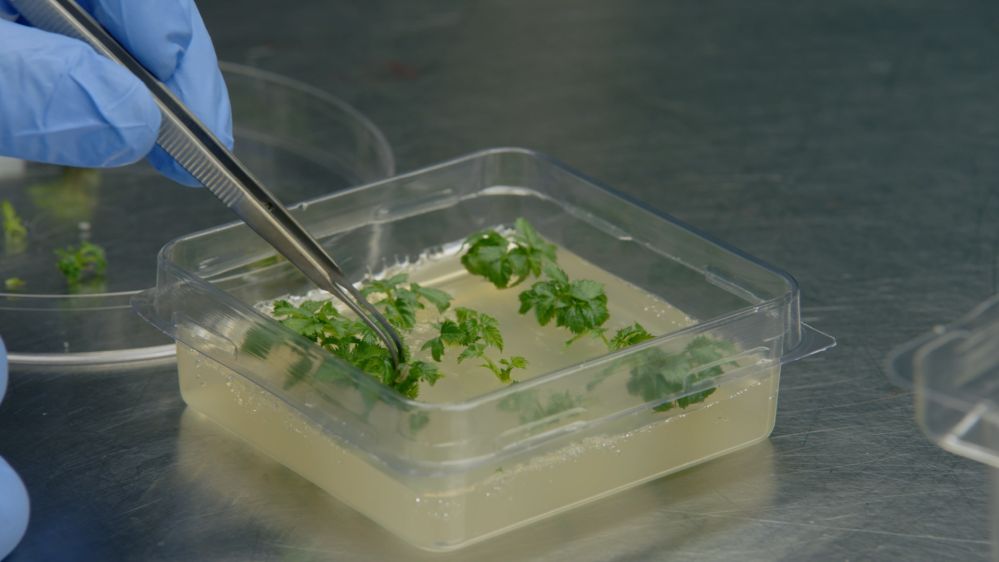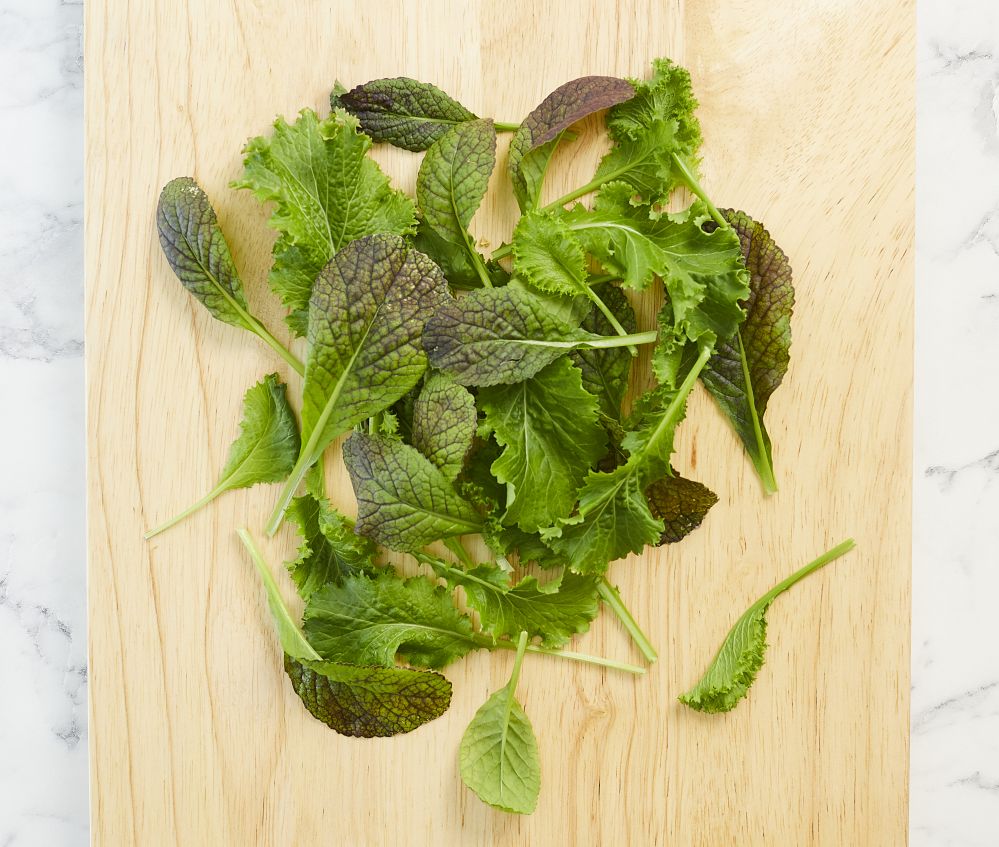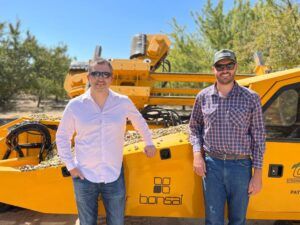Pairwise, a startup pioneering gene editing in plants, has closed a $40m series C funding round and formed a five-year joint venture collaboration with agtech giant Corteva to advance the tech to increase climate resilience in corn and soy.
The round—which brings Pairwise’s equity funding to $155 million—was led by Deerfield Management and returning investors including Aliment Capital and Leaps by Bayer, and includes $25 million from new investor Corteva via its Corteva Catalyst platform.
The capital will be used to scale Pairwise’s product pipeline and advance its ‘Fulcrum‘ suite of gene editing tools, said CEO Dr. Tom Adams. “[This is] an incredible validation of our technology and an important signal that gene editing will play a major role in improving agriculture innovation moving forward.”
He told AgFunderNews: “This puts us at the center of this technology for agriculture. As we have the two biggest ag companies as partners [Bayer and Corteva], that gives us access to hundreds of millions of acres for our technology to get into, so we’re quite excited about the impact we can have.”
What is gene editing?
CRISPR-Cas9 gene editing technology—billed as ‘programmable DNA scissors’— first hit the headlines in 2012. Since then, it has been used to create everything from pig kidneys that can be transplanted into humans to treatments for sickle cell disease.
Unlike transgenic plants, which are classified as genetically modified organisms (GMOs) for regulatory purposes as foreign DNA from another species is introduced; gene editing (of which CRISPR-Cas9 is one example) involves tinkering with species’ existing DNA. And in most jurisdictions, it faces fewer regulatory hurdles.
In a nutshell, practitioners design guide RNAs (molecules carrying instructions about making proteins) to direct Cas9 (‘CRISPR-assisted’) proteins to DNA at specific locations in a plant’s genome, enabling them to make precise ‘edits.’ This might include deleting or inactivating a gene responsible for an undesirable trait, for example.
Pairwise, which was founded in 2018 and has been collaborating with ag giant Bayer on more robust corn varieties, also has other tools in its toolbox aside from this basic ‘cutting’ tool, including ‘base editing‘ and ‘templated editing’ and has worked on everything from corn with more kernels to seedless and thornless blackberries, and mustard greens without bitter notes.
“CRISPR is very precise. If you have a red apple with all the traits for disease resistance and great yields and, but consumers want a yellow apple, you can take that red apple and just mutate one gene that causes a conversion from yellow to red and make it so it stays yellow. But all of the other properties—the yields, the disease resistance—would stay the same.” Dr. Tom Adams, cofounder and CEO, Pairwise
Precision and speed
“What’s really exciting about gene editing is precision and speed,” Corteva chief technology and digital officer Dr. Sam Eathington told AgFunderNews.
“If you think about modern plant breeding, we have been quite successful in enhancing our crops. But there’s still an element of randomness in how genes come together, so you might get the trait you want, but also a bunch of things you don’t want [when you cross one domesticated corn variety with a wild relative with a particularly attractive trait for example].
“What gene editing lets us do is get rid of some of that randomness and be very precise, like, hey, I want these genes together; I want to modify this gene; I want to create variability in this gene. These are all things that naturally happen in nature, but at low frequency, or you get a positive change and a negative change at the same time.”
‘One plus one equals three’
While Corteva has been working on gene editing key crops such as corn for several years in-house, it has also developed partnerships with companies such as Tropic Biosciences, and believes its work with Pairwise can accelerate progress, said Eathington.
“We’ve had a long history working in gene editing, almost from the day it was first discovered. We started working on a number of the Cas9 enzymes, developing our own proprietary stuff in house and figuring out how to best use the technology for plant disease resistance and yield. If we can drive up productivity, I still contend that’s the best way to make agriculture more sustainable. BUt we’ve also looked at quality traits such as protein or oil profiles that we think create animal feed or downstream fuel opportunities that can be useful in the marketplace.”
He added: “When we looked at what we have in house, our proprietary capabilities, and what Pairwise is doing, we felt that one plus one equals three. What we want is a collection of tools and working with Pairwise will give us a jump start in accelerating products as the regulatory environment begins to shape up.”
Gene editing and regulatory pathways: a mixed bag
For the most part, he said, “the Americas are fairly positive when it comes to policies and procedures on gene editing, Mexico being the outlier. China has approved cultivation [of gene edited crops] and Japan has gene edits on the market.”
Meanwhile, Europe “has moved a long way from its 2018 central ban,” he added. “We’re not there yet, but we’re hearing a lot more positive rhetoric, and the current policies they’ve written are quite workable to not only export, but actually cultivate [gene edited crops].
“Europe has set some preliminary policy about the number of edits so we’re still working to figure out what that means, and how they count, as most of the world’s regions do not have that restriction. Multiplexing [a gene editing technique that allows for the simultaneous targeting of multiple DNA sequences in a genome] is something that we do quite a bit of, so that’s important.”

Five-year collaboration
The joint venture collaboration with Pairwise will span five years, Eathington explained. “Five years is a good time to really create a bunch of products, test them, see how the technology is delivering.”
He added: “The possibilities are quite large. What the tools let us do is really work with plant variability that’s maybe hard to work with as a plant breeder. So there might be a variation that would improve, say, yields under drought tolerance, but it’s in really unadapted germplasm, or it’s spread out across lots of different germplasm, and the process of trying to bring it all together is quite complicated.
“So what usually happens [with traditional breeding techniques] is that you lose part of what you want and you bring along a whole bunch of stuff [from, say, an undomesticated plant] that you don’t want. Now [with gene editing tools] a plant breeder is able to say, Look, I need these genes. I need variability in these genes. I want to put together these combinations I haven’t seen before, and direct it so that I have a high probability of getting what I want rather than flipping a coin.”
To make best use of CRISPR technology and benefit from the natural diversity in domesticated plants’ wild relatives, it also helps to have an extensive library of germplasm to play with, he noted.
“So one of the nice things about Corteva, we’re in all the major corn and soybean growing regions and we have proprietary germplasm, and lots of variability in that germplasm, enabling us to bring together these combinations that we think will be helpful.”
Stepping back, he said, gene editing is going to be transformative in plant breeding. “If you look at what’s happening with climate shifts, new pest problems are spreading, temperatures and drought problems are spreading. And while modern plant breeding is pretty phenomenal, it is getting harder and harder, so we need more tools.”

Pairwise CEO: Working with the native gene
Speaking to AgFunderNews in June, Pairwise CEO Dr. Tom Adams said: “I think we’re getting closer to a global acceptance of CRISPR being treated more like a breeding product than a GMO product, which I think is appropriate because you’re working with natural variations within a species, you’re not bringing in DNA from another species, although the way GMOs are viewed [by regulators] is overkill in most countries.
“However, there’s a debate over how many changes [genomic edits] you can make before it’s not seen as a ‘natural’ change. Is it 10 changes or 20 changes? When does it become a different gene? And that’s where there’s a lot of difference around the world.”
Convenience, palatability, nutrition
As for the potential of gene editing in specialty fruit & veg crops, Pairwise has been focusing on consumer traits that increase convenience, palatability, and nutrition, he said.
“With nutrition, there are two approaches. One is what we’ve done with mustard greens, where you take a plant that is naturally nutritious and make it more appealing by removing barriers to consumption such as taking out the bitterness. But there are other approaches. For example we have a black raspberry we’re working on, which is actually the native raspberry in North America. It is more nutritious [than red raspberries] but it has big seeds and some domestication problems. So we’re trying to domesticate it using CRISPR to make it more like a red raspberry.”





